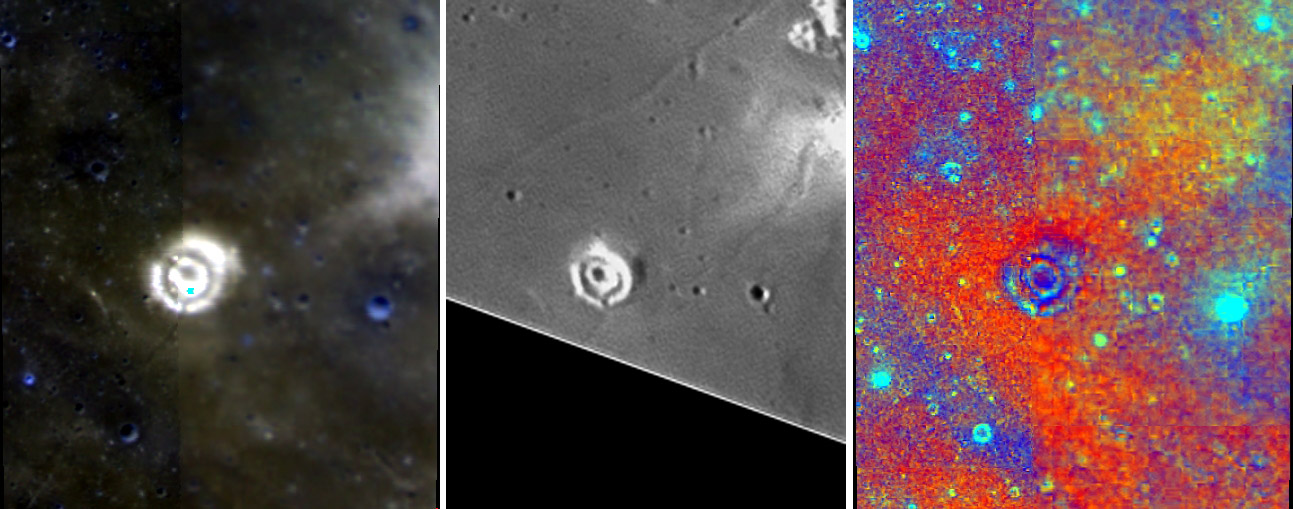
Left and right images from Clementine viaMap-A-Planet; middle image by Wes Higgins
Yesterday’s LPOD made the case that Marth may be a chance second impact centered within a pre-existing impact crater. Today things get fuzzier. The middle image by Wes Higgins is similar to yesterday’s by Bruno, but with higher and opposite (sunset) lighting. This shows that the inner ring is bright everwhere, but there is still an inner shadow suggesting a bowl shape. The left image is a Clementine color albedo image and the right is a Clementine ratio (false color) image, both from Map-A-Planet. The left image shows that both the inner and outer rings of Marth are very bright, similar to crater ray material at top right, but not blue like fresh crater rims. The right image reveals the Marth rings to be blue rather than white like the fresh pulverized mare material in the nearby small impact craters. Interestingly, the moat between the Marth rims is red - the color of highland dusted surfaces. I am not sure what this all means but neither the inner nor outer rings of Marth have the color or morphology of normal impact craters - perhaps they are both non-impact in origin. I am glad I have cleared this mystery up!
Technical Details:
May 11, 2004. Starmaster 18: reflector, DMK-21F04 camera, 30fps, stack of 380 frames
Related Links:
Rükl plate 25
Wes’ lunar photos
SUPPORT LPOD - VISIT A SPONSOR (CLICK AN AD BELOW)!
Now you can support LPOD when you buy any book from Amazon thru LPOD!
COMMENTS?
Click on this icon File:PostIcon.jpg at the upper right to post a comment.



